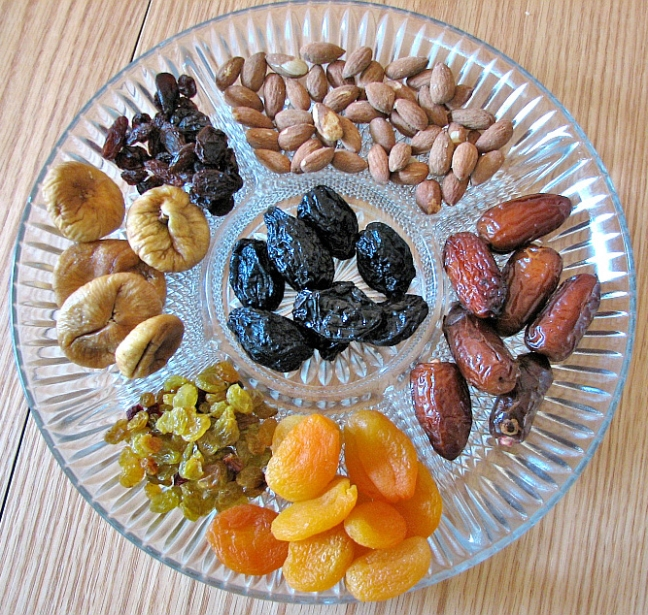Have you heard about FODMAPs before? The low FODMAP diet is becoming more and more popular, and Natasha from Dance Flow Lift explains a little more about FODMAPs with the help of Women’s Health magazine.

While reading this month’s Food Issue of Women’s Health magazine, up popped a little word that up until now, I’d heard of, but had very little idea what it meant. Actually, I had NO idea what it meant! So here I am trying, not only to learn and understand about FODMAPs myself, but to share that information with you lovely people.
To talk about FODMAPs, we have to take a little look at gluten, and the rise of self-diagnosed gluten intolerance. Dubbed by some as the ‘new cool way of eating’, the free-from industry is worth a massive £355million in the UK and suffers from its fair share of backlash. In fact, it’s thought that most people who believe themselves to be gluten intolerant, are not actually diagnosed with coeliac disease.
Now, there’s no doubt that gluten does have an effect on the gut, and is known to flare up the symptoms of IBS for those that suffer with such an affliction, but to quote Women’s Health magazine: One woman’s carb bloat is another’s intolerance. New research is suggesting however, that there is another nutrient group being focused on when it comes to gut health… FODMAPs.
FODMAPs
Actually an acronym standing for Fermentable Oligosaccharides, Disaccharides, Monosaccharides and Polyols, you’re probably thinking “What the FODMAP is all that?’”, and I agree that there are a lot of long words to process there! Without writing an essay about nutrients and their chemical make-up, I’m going to do my best to make this explanation as succinct as possible.
A saccharide is a type of carbohydrate. Whether it’s a mono-, oligo-, di- or polysaccharide is determined by the amount of carbohydrate / sugar molecules joined together. The different types of saccharide then, according to their collection of hydrogen, carbon and oxygen molecules, are separated into types of sugar such as glucose, fructose, lactose etc.

In short, these prebiotic compounds are poorly absorbed by the small intestine and therefore wind up undigested in the colon. There they are fermented by colonic bacteria… lovely. For most people, this doesn’t present much of a problem as it’s a natural chemical process, but for those prone to IBS symptoms, these FODMAPs can cause all sorts of gut trouble. The reason that this can be misconstrued as a gluten intolerance is that lots of the gluten containing bread, biscuits and pasta, also contain high levels of FODMAPs.
In tests conducted by Dr. Peter Gibson (gut health expert), IBS sufferers with self-diagnosed gluten intolerances didn’t react to carbohydrate-depleted wheat, even though it still contained gluten itself. This suggested that their IBS wasn’t due to the presence of gluten in food, but perhaps the FODMAPs instead. Confused? I think I still am a little but it’s getting a bit clearer.

FOD or FAD?
Now the next question burning on your lips is likely ‘well, isn’t this just another free-from fad?’ and my answer is… maybe, maybe not. There are always misgivings about the rise of free-from food, for example some people believe that eliminating one food group will solve all their problems and it’s rarely that simple. There’s also the notion that anything X, Y or Z-free must be healthy, and that’s not always the case either. Although tests have shown that IBS sufferers who were trialled a FODMAP-free diet did report a reduction in gut problems and IBS trouble, but these are early days.
There is no diagnosable test for FODMAP sensitivity, which increases the risk of self-diagnosis of course, but those who wish to go under the guidance of a doctor or dietician would likely be placed on an elimination diet to identify triggers and intolerance thresholds. Another thing to note with FODMAPs is that they are present in some healthy favourites such as avocado, apples and broccoli. FODMAPs run across all food groups and therefore adopting a FODMAP-free lifestyle isn’t as basic as simply cutting carbs. This might limit the amount of people who simply jump on the band-wagon of the latest media reported dietary advice.
The downside of switching to this lifestyle, is that most of the prebiotics that promote a healthy internal environment for the ‘good’ micro bacteria we need contain FODMAPs. Prebiotics feed the bacteria in the gut, creating a broad spectrum of microflora. It is believed that this mini-ecosystem within our bodies needs plenty of micro bacteria from FODMAPs for immunity, mental health and a good metabolism. Not something you want to give up without careful consideration!
With FODMAPs, as with any other suspected intolerance, is that the best way to proceed is to go to your GP to rule out diagnosable conditions and then look at elimination diets.
Clear as mud? I thought so.
If you’d like to know more about healthy diets, including diets such as the FODMAP trend, a subscription to Women’s Health magazine is ideal for you.






